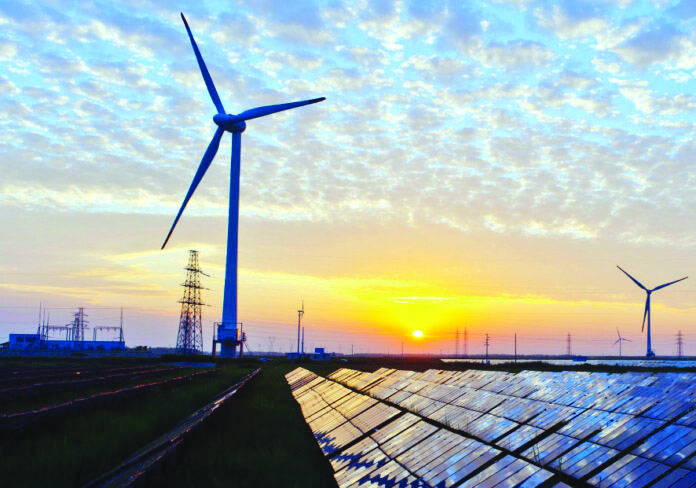Climate change is a leading phenomenon that is wreaking havoc on the overall environment of the world. The reasons for climate change are multiple, but one that is contributing enormously is the continuous use of fossil fuels. The burning of fossil fuels for cooking, electrifying houses, and commercial uses, such as crude oil, natural gas, and coal extracted out of the ground are the major causes of climate change. Consequently, it has led to the exacerbation of the deterioration of the environment.
The burning of fossil fuels causes heat to be trapped in the environment and contributes to global warming. According to the United Nations, climate change is a worldwide problem that knows no boundaries and affects everyone. The consequences of climate change are extreme – resulting in droughts, excessive rainfall, storms, intense heat, and melting of glaciers. It also impacts the weather patterns that unleash untimely rains and destroy unbiasedly. The impact of climate change was recently experienced in Pakistan when continuous rains led to affecting 33 million, and the loss of 1730 precious lives. Therefore, this piece will look into the vital role of renewable energy in mitigating emerging and consequential aspects of climate change.
This is just a huge loss of not utilizing the vast lands of Pakistan such as Balochistan, Sindh, and Khyber Pakhtunkhwa that have the capability of high capacity for producing renewable energy. By utilizing the potential of renewable energy, Pakistan will not only get out of its energy crisis but will also play a role in mitigating climate change and maybe in the future will not be a victim of the impending consequences of climate change
The biggest cause of climate change is the generation of energy by consuming fossil fuels. Most of the electricity is still produced by the burning of fossil fuels. It is estimated that coal, oil, and gas are the largest contributors to climate change accounting for 90 percent of total global carbon emissions. This form of energy after production is used in transportation such as cars, trucks, ships, and airplanes. Yet another usage of fossil fuels is in the powering of buildings for residential and commercial uses. The effects of this are hotter temperatures, leading to forest fires, yet again adding to the dilemma.
More severe storms, leading to extreme rains and flooding, are evident from recent floods in Pakistan. And more health risks, leading to harming health through air pollution causing the deaths of 13 million people worldwide. The figures stated are alarming and need serious attention. Last year, Egypt hosted the Conference of Parties (COP 27) of the United Nations Framework Convention on Climate Change. The COP’s main goal was to maintain the rise in average global temperature to 1.5° C (above pre-industrial levels). And to take the decision to establish a fund to respond to the loss and damage caused by climate change. Although, COP 15, was pledged to provide $100 billion in climate finances for adaptation yet only a quarter of its committed amount was delivered.
The pledges and commitments of participating members of the United Nations in COP are commendable but cannot be relied upon as very little has been done to limit the rise in average global temperature. The means to find alternative sources of energy should be relied upon and help overcome the said dilemma.
There are plenty of sources to get free and clean energy in terms of renewable energy. Renewable energy is a blessing of nature that refills itself in spite of its continuous use. Renewable energy can be obtained through solar, wind, geothermal, and bioenergy. Adding these sources of energy will limit the rise in average global temperature, as well as produce cheap and sustainable energy. Leading countries in this regard in 2021 are China with an installed renewable energy capacity of 1020 GW, the USA with 325 GW, Brazil with 160 GW, and even India with 147 GW. It should be kept in mind that 1 GW is equal to 1000 MW. These installments of renewable energy sources to meet the demand for electricity for commercial and residential uses will boost the commitments of the 70 countries including world leaders such as China, the USA, the European Union, and 3000 businesses and financial institutions to reach the net-zero target by 2050.
Considering Pakistan which has a total demand for energy of 25,000 MW at peak summertime which falls to 12,000 MW in winter has a lot to gain from the sources of renewable energy. Currently, the total capacity of energy generated in Pakistan is mostly based on fossil fuels accounting for a whopping 64 percent. Whereas the rest of the generation is from hydropower at 27 percent, nuclear power capacity at 5 percent, and only four percent from renewable sources.
This is just a huge loss of not utilizing the vast lands of Pakistan such as Balochistan, Sindh, and Khyber Pakhtunkhwa that have the capability of high capacity for producing renewable energy. By utilizing the potential of renewable energy, Pakistan will not only get out of its energy crisis but will also play a role in mitigating climate change and maybe in the future will not be a victim of the impending consequences of climate change.
The writer is a research officer at the Balochistan Think Tank Network (BTTN), Quetta.























